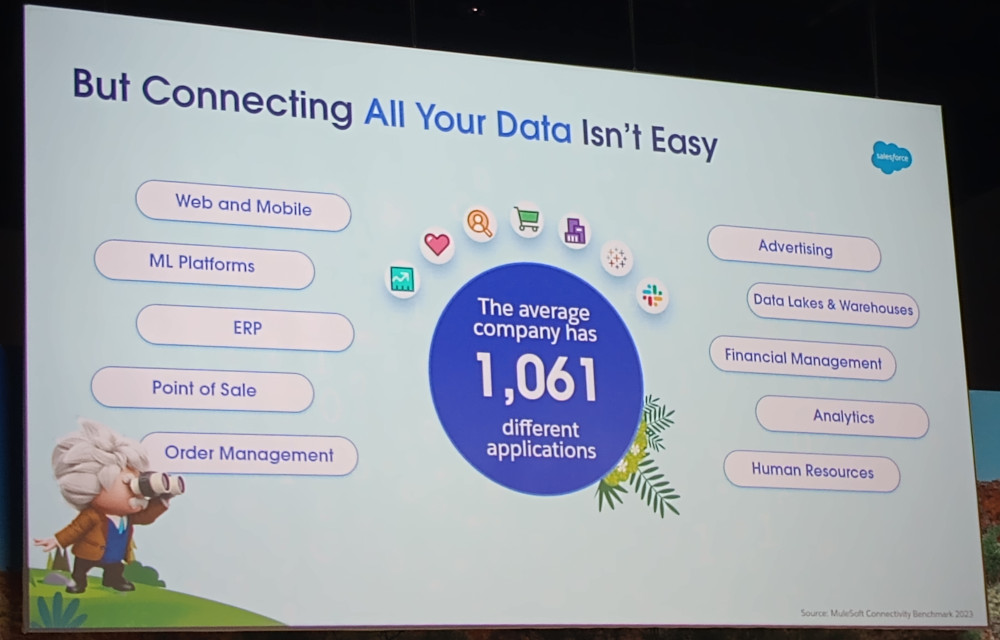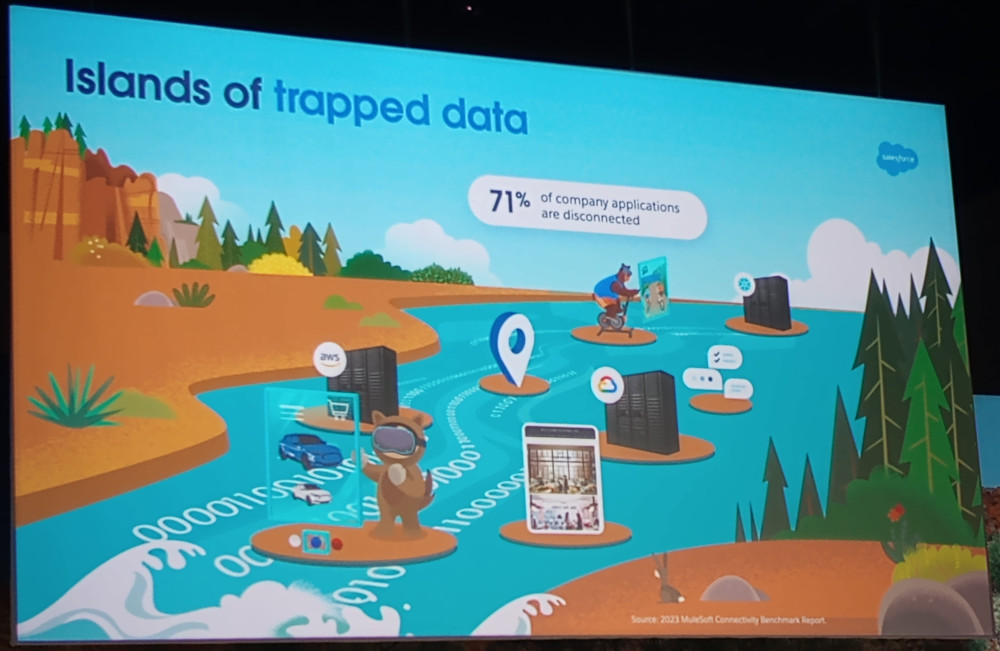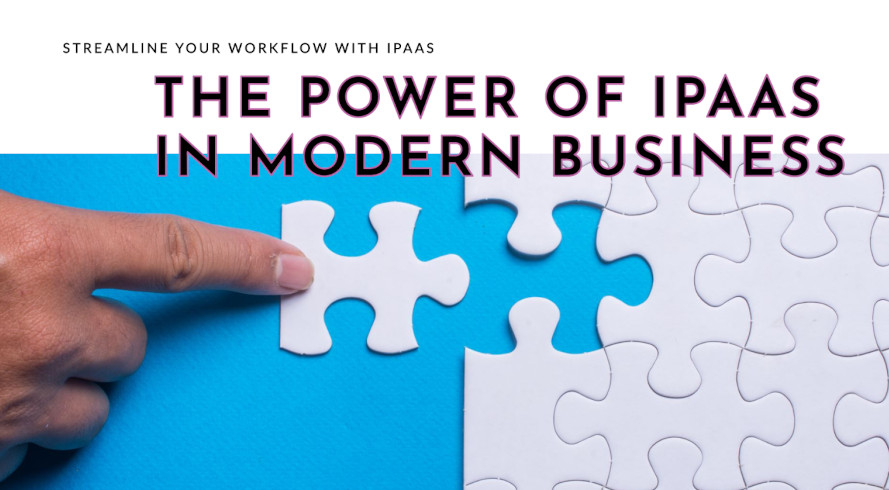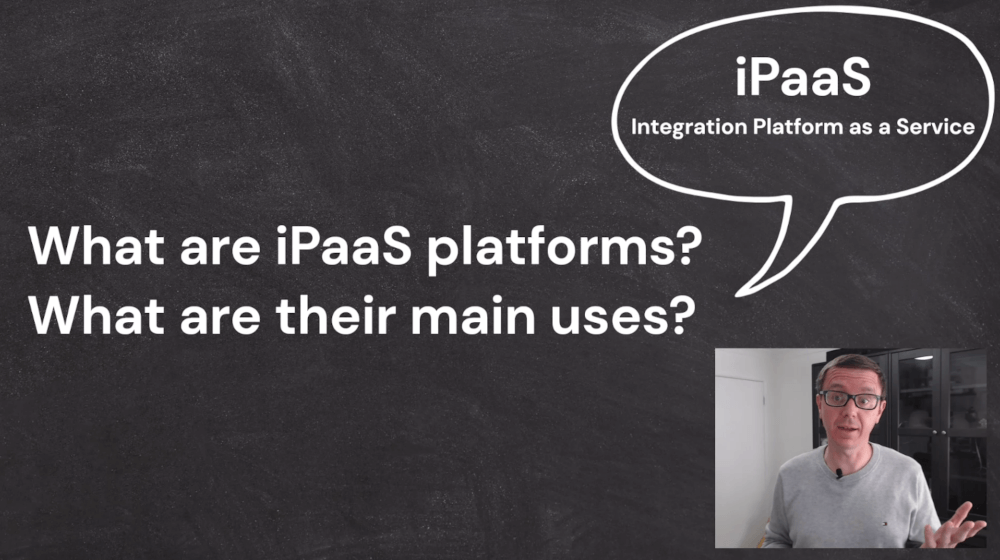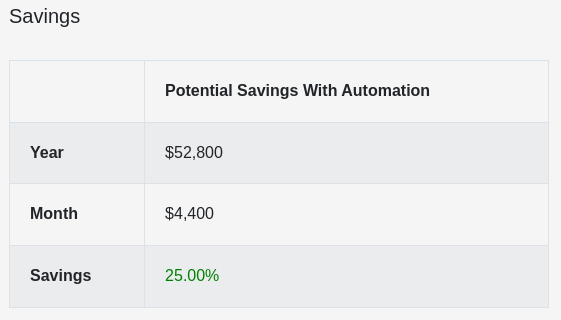The key role of iPaaS in modern businesses

iPaaS and modern businesses
In today’s digital landscape, traditional integration methods struggle to keep pace with evolving business needs. Integration Platform as a Service (iPaaS), are steadily changing the game in connecting disparate software applications and driving business agility.
What is iPaaS?
iPaaS is a family of scalable and user-friendly cloud-based technology products, that facilitate seamless interconnection, handover and automation of existing SaaS applications.
Why should you care?
There are thousands of applications used by businesses every day.
Salesforce surveyed their customers and the average business uses more than 1,000 different SaaS applications today!
You read it right, 1 thousand software applications for every business!
The research says that 71% of the applications are disconnected. (Salesforce World Tour event)
This creates data silos and duplication, incorrect and slow-moving information that generates business inefficiencies and suboptimal customer service.
How does iPaaS help you?
iPaaS help you interconnect all your systems together.
Not just two systems at the time, but orchestrating N systems at the time, to achieve business outcomes.
iPaaS strong relationships with SaaS software providers
iPaaS vendors have relationships with most software providers and build something normally called “connectors” to facilitate the exchange of information between systems, including authentication, re-tries, error handling, and some triggering actions and API operations.
They also provide generic connectors to allow you to connect to any HTTP-based API (even your own), download and parse files, connect to databases and any existing data sources and much more.
iPaaS harmonization of business software
This is no longer a game of creating N point-to-point basic integrations that create chaos in the long term within your business. It is about harmonizing entirely every business software as if it was one, as much as possible. Making your business software truly unique.
iPaaS is the glue that holds your business processes together and gives you a competitive edge.
The price tag and implementation times are no longer what they were for the ESB (Enterprise Service Bus), which took years to implement. And the scalability of the current cloud applications is infinite.
It is all about incremental, constant, simple business improvement that provide immediate value.
iPaaS: easy, efficient and effective, immediate value
iPaaS automation
iPaaS are mostly no-code or low-code tools.
In reality, it does not mean that you wake up tomorrow and everyone in your organization can interconnect all your systems.
iPaaS are easy to use, efficient and effective, and therefore provide immediate value.
You still need highly competent people to think about the correct and future-proofed approach. They have to think about scalability challenges, and about making sure not to overwhelm any of your existing systems with their constraints and technical limitations.
iPaaS - democratisation or not? Be mindful of the challenges of DIY
Some iPaaS players talk about the democratisation of integrations, which is (mostly) true. Just be mindful that with great powers come great responsibilities! Some CIOs and CISOs will certainly cringe right here as well!
Food for thought, if everyone can build integrations, what happens if your junior Sales Exec by mistake creates an incorrect integration that takes down your CRM, or uses your full CRM API quota for the day, or involuntarily publishes your customer database to a public Google Sheet?
Again, great powers, great responsibilities.
iPaaS efficiency and value
The beauty is that you do not have to do everything from scratch, and re-invent the wheel for each system. You do not have to worry about the platform development, deployment, maintenance, innovation, compliance, logs, retention, failures and scalability. It is all part of the iPaaS platform solution as their service offering. And this in itself is well worth the platform costs, at least for a few hundred people’s company and above.
You (normally) do not have to think about how to connect to a system either. The platform’s connector would handle authentications, credentials, failures and everything else you need, like newer versions of connectors compatible with the newest software versions.
Ok but how? Can you give me an example so that I can picture it?
Sure, I’d be happy to!
High level use-case
Let’s say you are a B2B software company that provides direct support to your customers. You use a CRM, a separate ticketing system and chat software for team collaboration.
You can easily interconnect your Salesforce CRM with your Zendesk ticketing system and Slack as a collaboration layer to achieve smooth customer interactions.
Digging deeper, the solution you could have, limited by your imagination
Let’s go way deeper with the use case and the surrounding story.
A new ticket is created by a customer on Zendesk, it is marked as urgent.
We have integrated sentiment analysis and we know the customer is frustrated. This information is provided to us automatically.
True 360 degrees view
Your iPaaS solution cross-checks Salesforce to understand more about the account: its account owner, customer success representative, what level of subscription they have, their CLV (Customer Lifetime Value) etc.
The system tells us that the ticket is from one of our top-tier long-standing customers that brings in a substantial amount of revenue, and their renewal is in a little less than 4 months.
We need to be on top of our game, and we need to act now.
Potential GenAI components
The system leverages pre-existing APIs (hello OpenAI GPT-4, AWS Comprehend, Amazon Bedrock etc.) to have meaningful and summarized information that we can consume quickly. By building your specific approach you can deliver a consistent experience across systems, instead of leveraging every different SaaS solution, providing different outcomes.
The system leverages generative AI to help with ticket routing to the best customer service representative(s) with the right skillset for the challenge ahead.
The system can even query the internal Knowledge Base service API, to propose articles that could help solve the problem encountered, and again leverage GenAI to draft a possible message for the customer service representative to double-check.
Involving and updating the right people, a collaboration layer
The system creates a Slack channel and invites all relevant parties that are working today, to the collaboration channel, to help communication. The relevant customer information, a summary of the problem and the possible solution are available in Slack through our integration, including the phone number for a prompt reach out.
We are ready to go, in seconds, with all the information and the team members brought to us automatically. We did not need to sift through multiple systems looking for the right information, while the customer was waiting. We are ready to do what we do best: call our customer and gladly solve their problem, with the whole team backing us.
After we confirmed that we solved our customer’s problem, the system archives all the conversations against the customer records, together with a summary. It archives the Slack channel, sends a survey to the customer and schedules a follow-up call from their customer success representative.
Can you picture it now?
How does this sound for your business?
Would you be happy with this level of service?
It is not rocket science, it CAN all be done today.
And this is just an example of how this tight-knit business process could work.
There are infinite possibilities! The only limit is your imagination.
How do we prefer to think about things?
High uncertainty
Integrations are complex, systems are different, data models do not match, APIs can be clunky. For these reasons, there is a lot of uncertainty in the systems integration space.
Start small - POC to prove feasibility
We recommend starting with a couple of key business challenges that will provide the most value if solved.
For those challenges, we recommend identifying the biggest uncertainties and defining a POC (proof of concept) to prove the feasibility of the overall project and eventually pivot.
Start small - MVP for some quick wins and value
Then decide on the minimum effort that would deliver value (MVP - minimum viable product) and deliver upon that MVP, testing it as soon as possible with the end users - your employees and eventually your customers.
Move quickly, learn and iterate
Finally, we recommend iterating from there, providing more and more value at every iteration until the ideal state is reached.
Then we recommend moving on to the next key business challenge and again iterate.
Move faster with Naonis
At Naonis we specialize in modernising and harmonizing your business through automation and integrations, by leveraging existing iPaaS and automation technologies.
We help you fill your team’s gaps through a collaborative, consultative and lean approach. We leverage an iterative process based on proof of concepts and minimum viable products, geared towards proving (or disproving) our collective assumptions.
Run when you can, walk when you have to. You can move faster, with Naonis.
If you are looking for a trusted advisor, contact me for an initial conversation about your vision and needs.
Key takeaways
- Start small: Begin with proof of concepts (POCs) to test feasibility and minimum viable products (MVPs) for quick wins.
- Move quickly and iterate: Continuously iterate based on user feedback, gradually scaling up to address key business challenges. Prove ROI in the process.
- Leverage the right expertise. Naonis offers a collaborative and consultative approach, helping businesses fill gaps in their teams and move faster towards their automation and integration goals.
iPaaS Platforms FAQ
What is iPaaS and how does it benefit modern businesses?
iPaaS, or Integration Platform as a Service, is a family of scalable and user-friendly cloud-based technology products that facilitate seamless interconnection, handover, and automation of existing SaaS applications. It benefits modern businesses by streamlining system integration, automating workflows, and improving overall efficiency and customer experience.
Why is iPaaS important for businesses today?
In today’s digital landscape, businesses use many SaaS applications. However, many of these applications are disconnected, leading to data silos, duplication, and inefficiencies. iPaaS platforms play a crucial role in connecting these disparate applications, reducing manual tasks, and optimizing business processes.
How does iPaaS help businesses harmonize their software ecosystem?
iPaaS platforms enable businesses to interconnect all their systems together, orchestrating multiple systems simultaneously to achieve the desired business outcomes. They provide pre-built connectors for various software providers, allowing seamless exchange of information and harmonization of business software.
What are some key features of iPaaS platforms?
iPaaS platforms offer features such as pre-built connectors for software providers, generic connectors for HTTP-based APIs, file download and parsing capabilities, database connections, and more. They also support automation, data transformation, and management, making them essential tools for modern businesses.
How do iPaaS platforms empower businesses with automation?
iPaaS platforms predominantly offer no-code or low-code tools, making them accessible to users with varying technical expertise. While they provide immediate value through efficiency and effectiveness, it is important to have the right level of expertise to ensure scalability, avoid overwhelming existing systems, and address potential challenges.
What are the potential risks associated with iPaaS platforms?
While iPaaS platforms can help enable and democratise integrations, allowing any users to build connections easily, they also pose risks if not managed properly. Users must be mindful of potential mistakes. Incorrect or suboptimal integrations could disrupt systems or compromise data security. With the power of iPaaS comes the responsibility to ensure proper oversight and governance, which can be mitigated by engaging the right level of expertise.
How can businesses ensure the successful implementation of iPaaS platforms?
We believe that to ensure the successful implementation of iPaaS platforms, businesses should start with a proof of concept (POC) to test the feasibility and mitigate uncertainties. They should focus on delivering minimum viable products (MVPs) for quick wins and measurable value, iterating based on user feedback, and gradually scaling up to address deeper and more complex business challenges. Recognizing at every step of the way the ROI (Return On Investment) delivered is also paramount for the acknowledgment of success.
How can Naonis help businesses leverage iPaaS platforms for automation and integration?
Naonis specializes in modernising and harmonizing businesses through automation and integrations using existing iPaaS and automation technologies. We offer a collaborative, consultative, and lean approach, helping businesses fill gaps in their teams and move faster towards their vision.
Might also be interesting
Automate sensitive data removal in AI & CRM systems securely
Automate Personal Identifiable Information (PII) Removal!
A step forward to securing Your sensitive business data.
Increase ROI with reusable iPaaS components for automation
Do you know what is the killer iPaaS app based on what we are doing?
AVID Property Group achieves 194% ROI with Tray.ai
What $ ROI can you expect by implementing a comprehensive automation program in your business?
My top 6 reasons why CRM projects still fail!
My top 6 reasons why CRM projects still fail!
40 years after CRM was invented…
and the majority of implementations fail!
Tray.ai implementation and consulting
Improve your business efficiency with our Tray.ai implementation and consulting services. Our expert team ensures seamless integration and business process automation solutions with Tray.ai, optimizing efficiency and maximizing outcomes.
Discover our tailored solutions for effective workflow automation and system integration of your current systems.
All trademarks mentioned on this page are the property of their respective owners. The mention of any company, product or service does not imply their endorsement.

